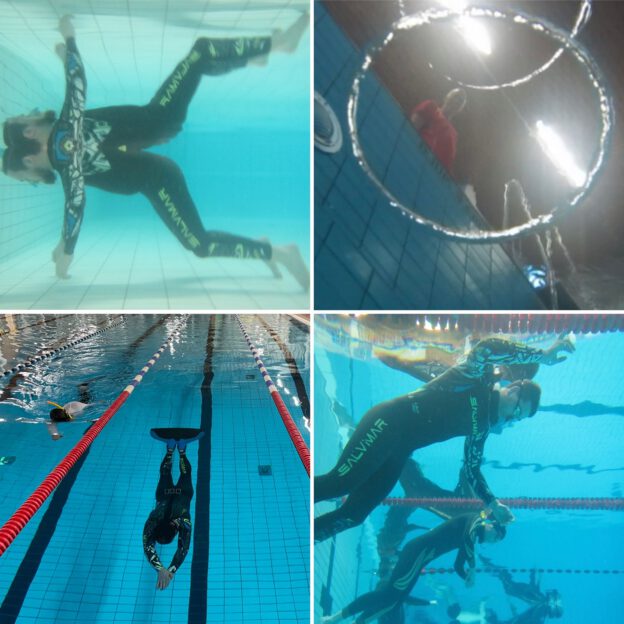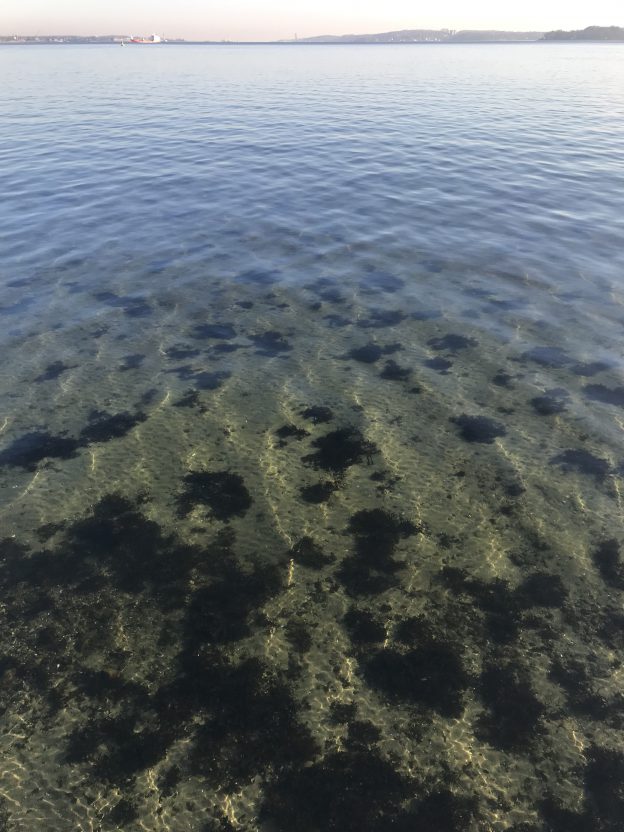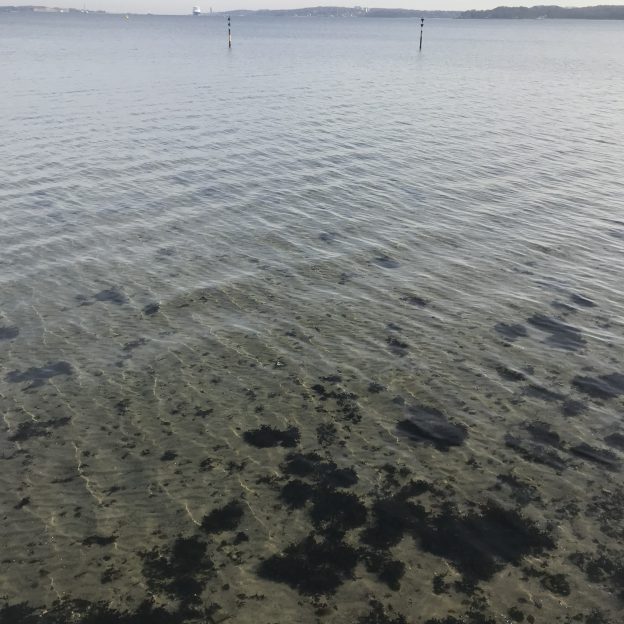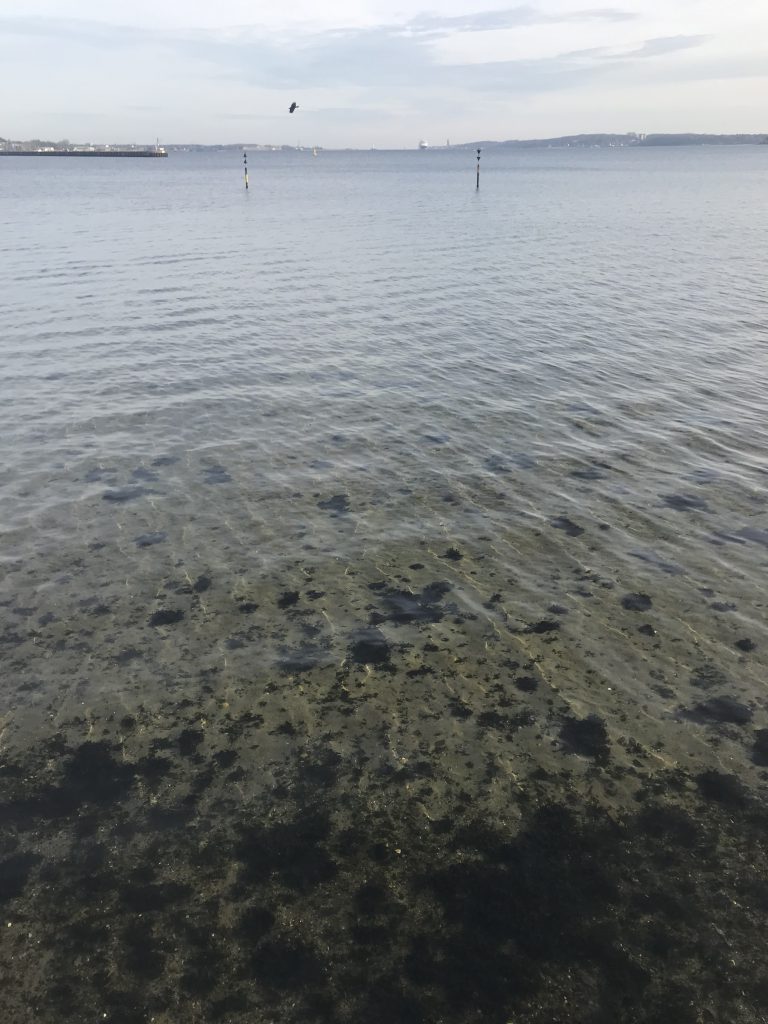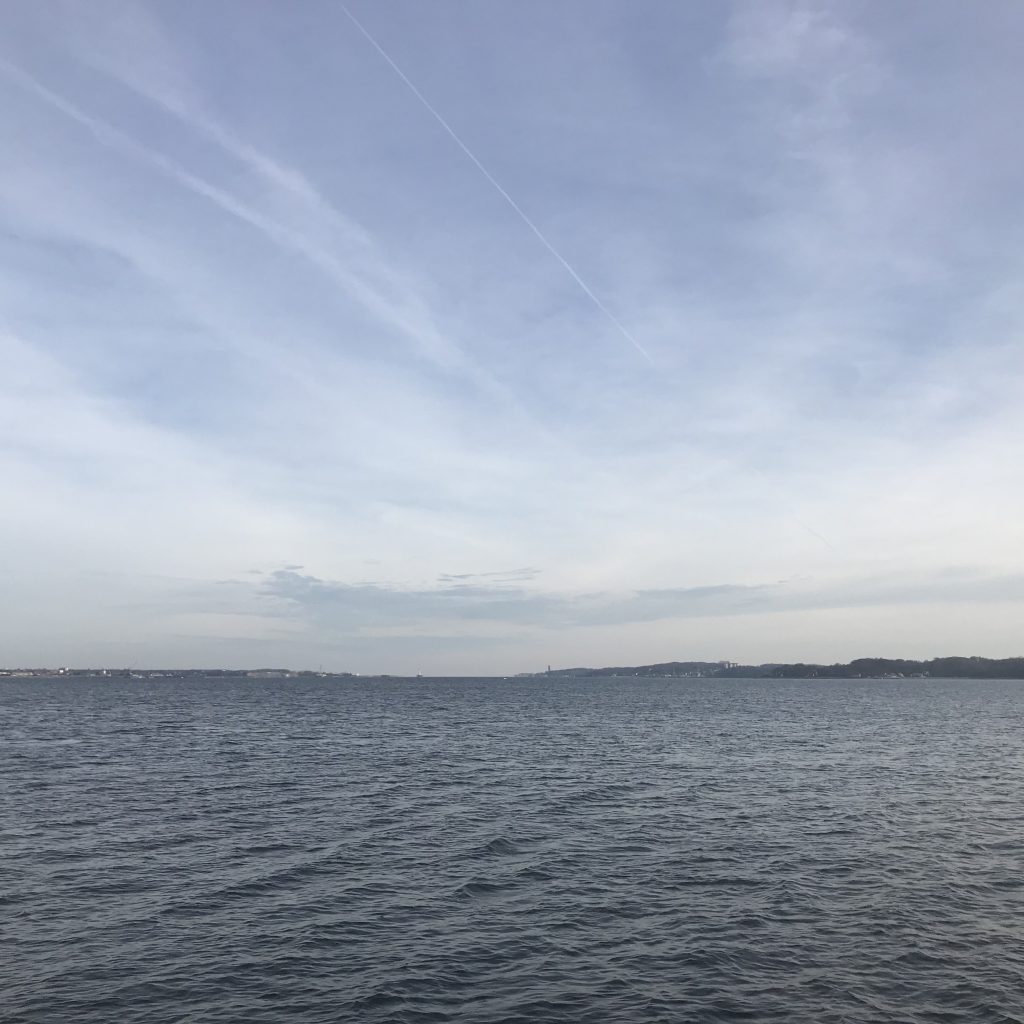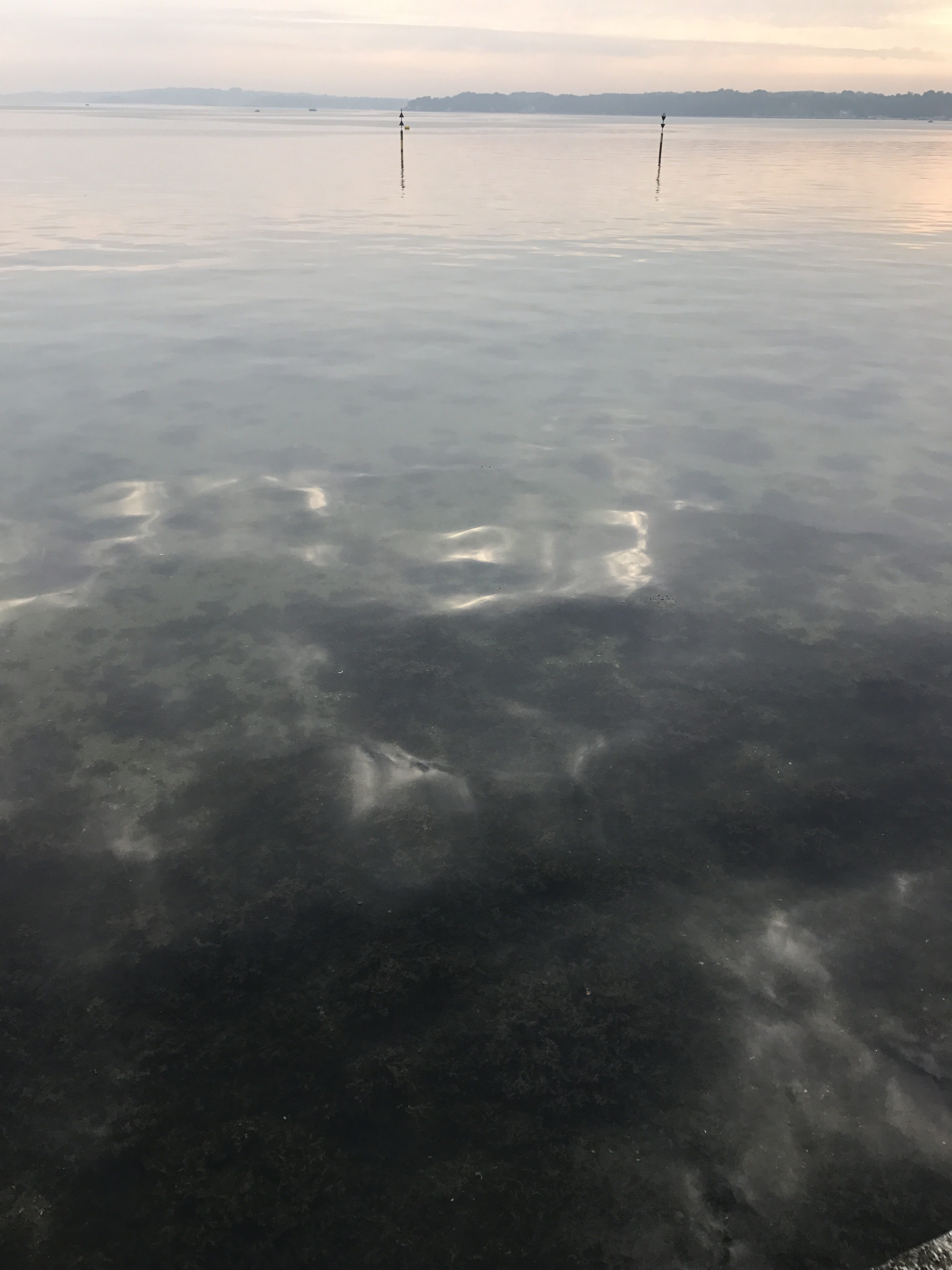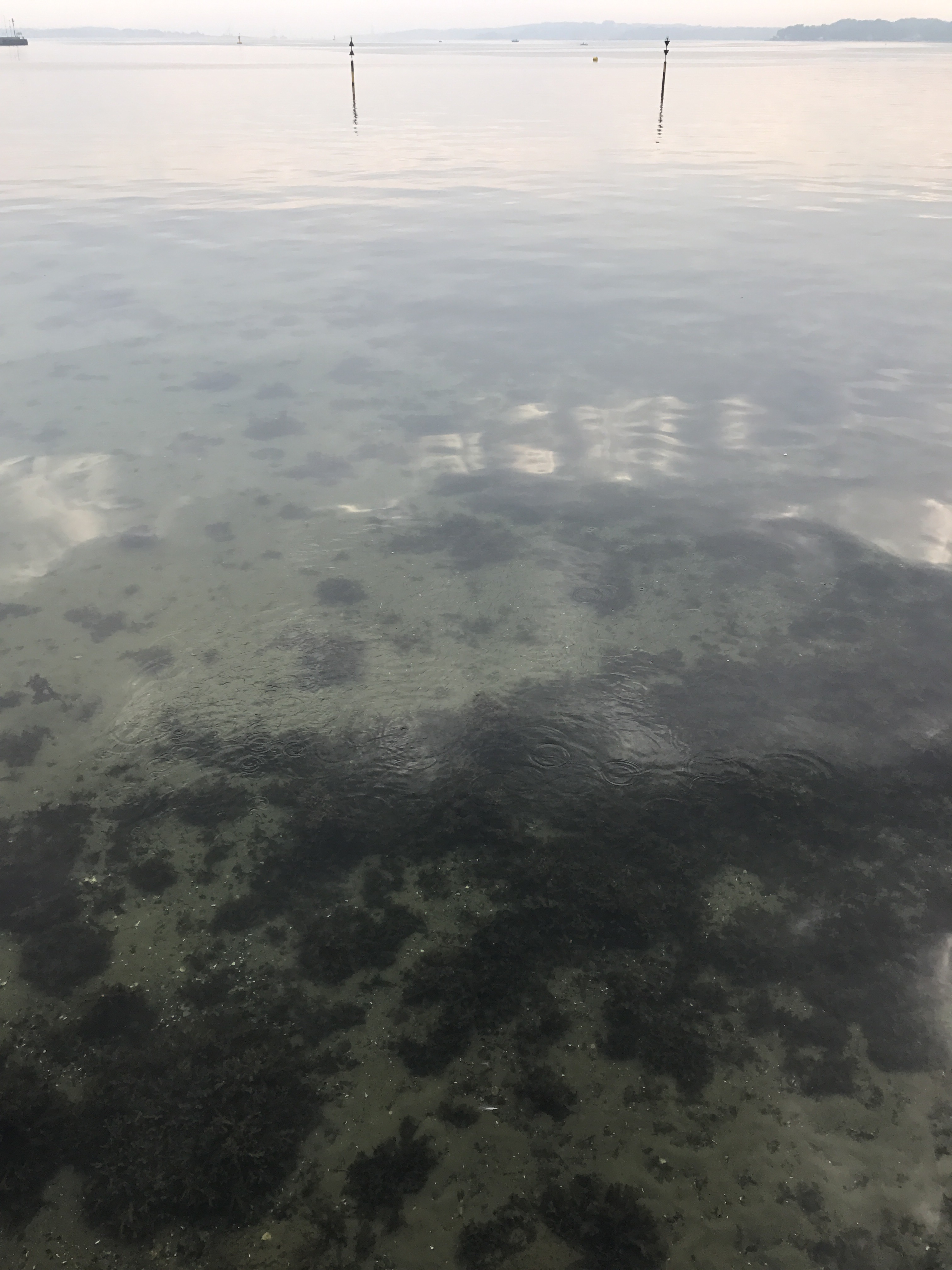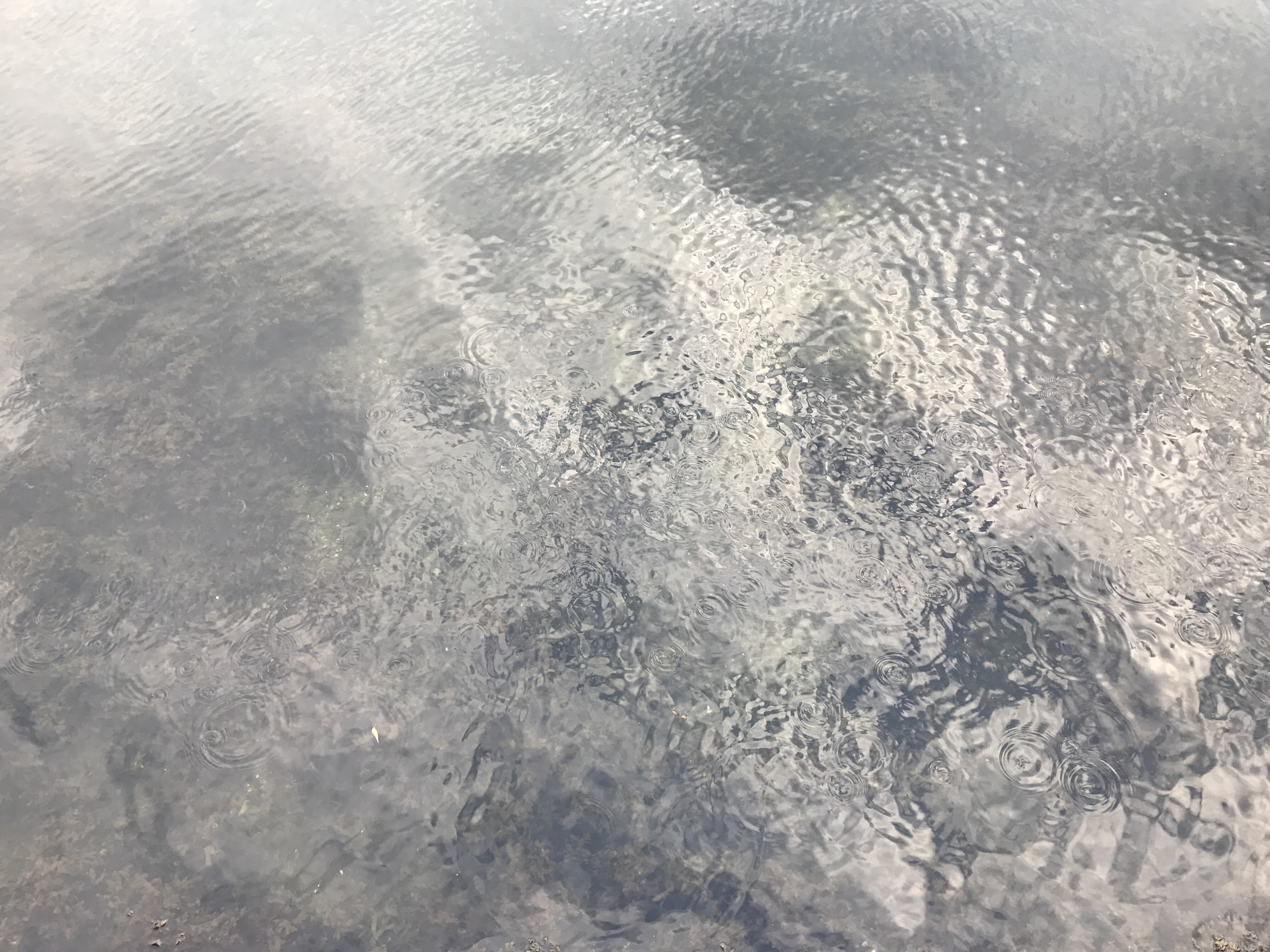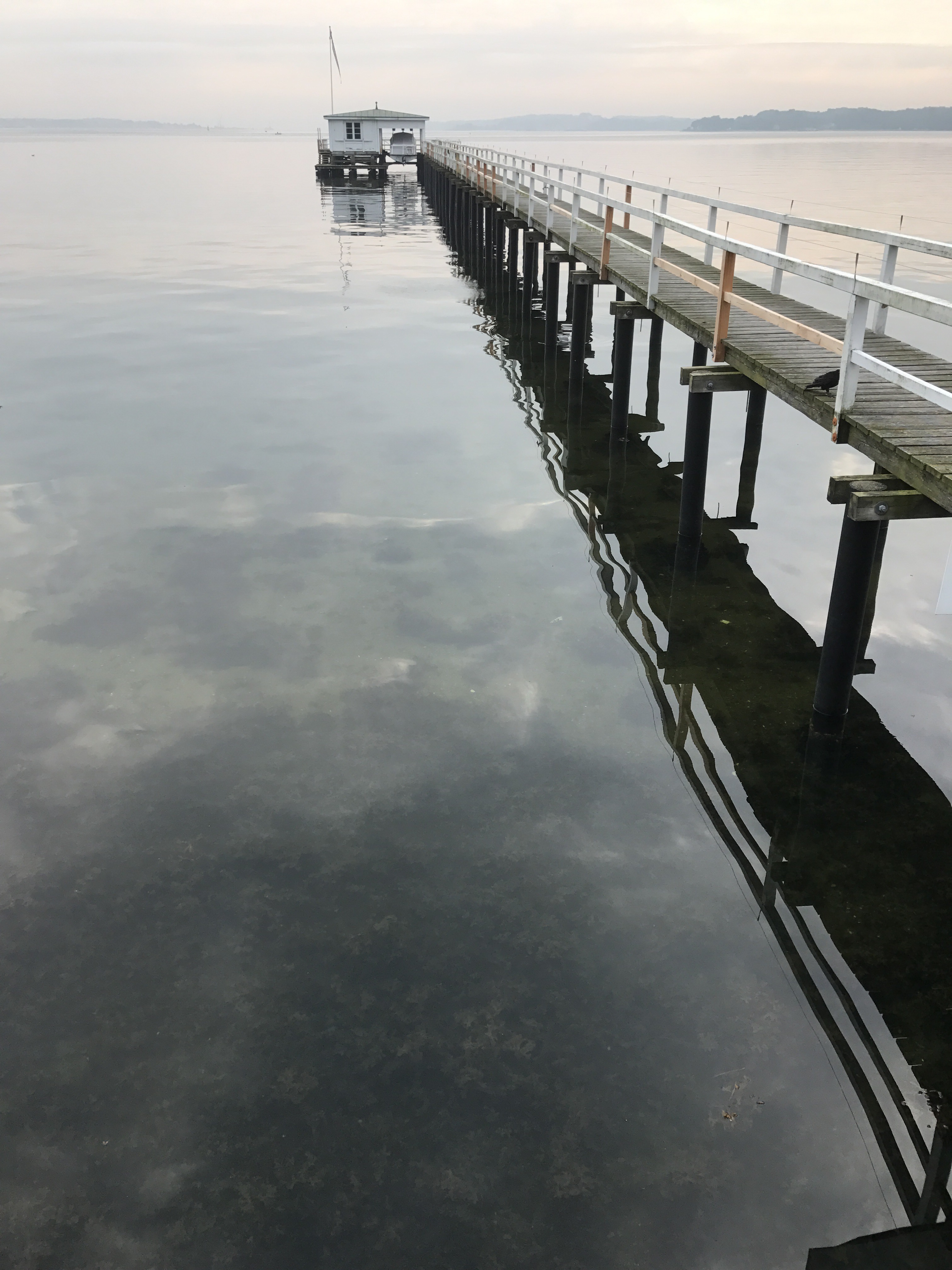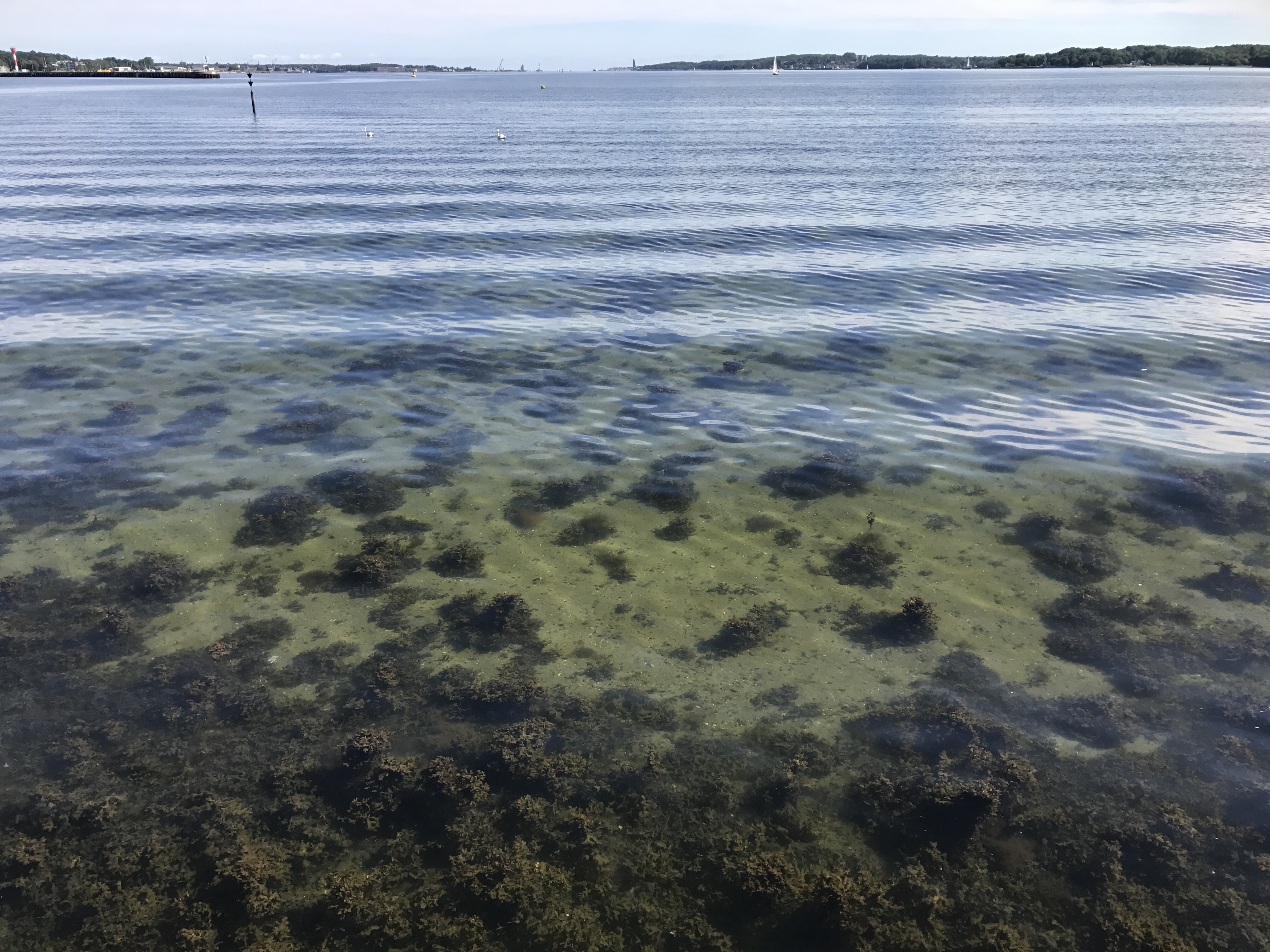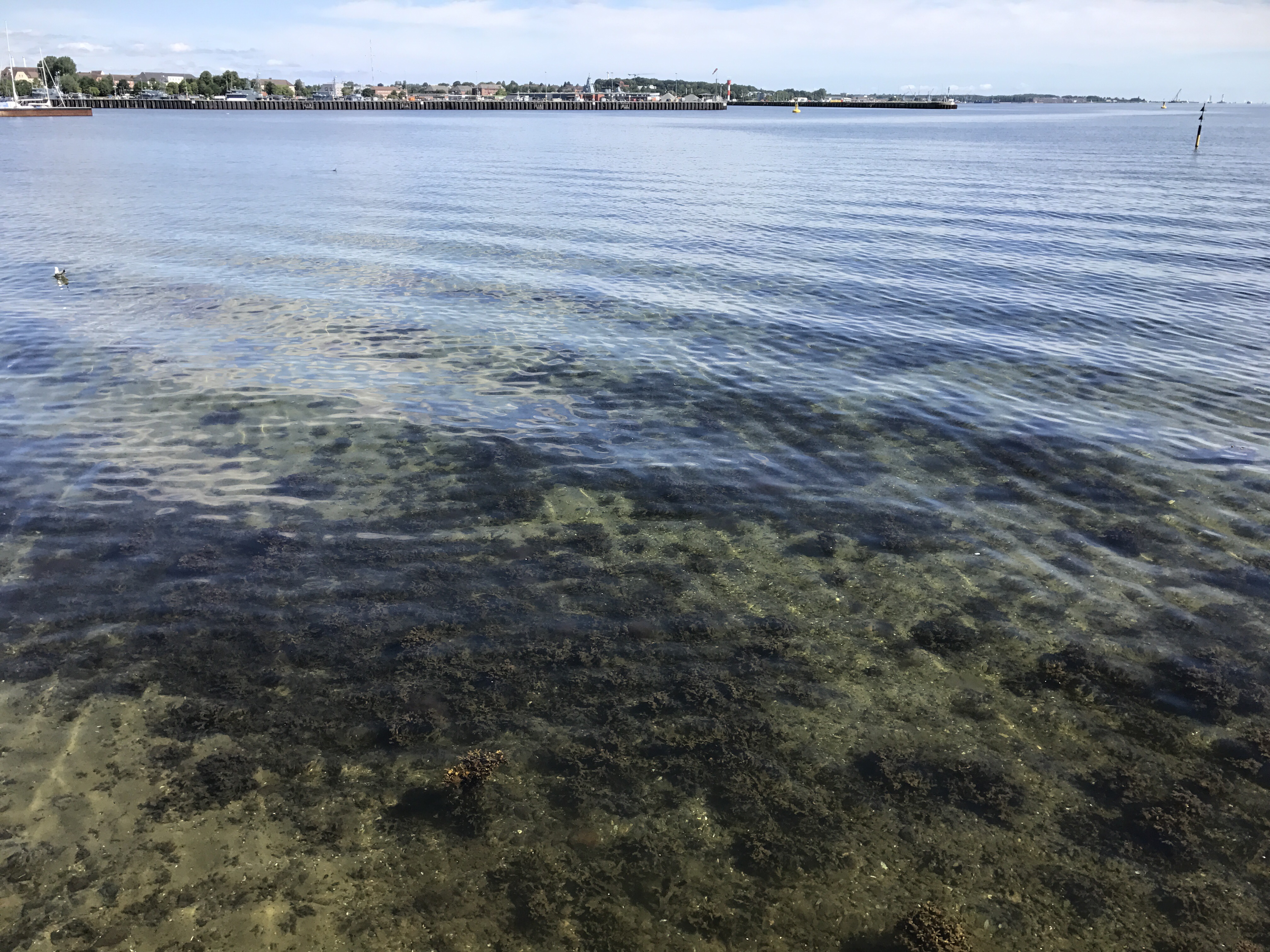What is it that we actually look at when we go wave watching? Water is pretty much clear (or at least it is in the spots where I like to go wave watching), so how come we are able to see waves?
What we are looking at are not actually the waves themselves, but at how surfaces oriented in different directions reflect light from different directions towards us, and usually the light isn’t uniformly distributed, so we see lighter and darker areas on the waves that are associated with certain orientations of the surface, i.e. the slopes going up and down to and from the crests.
But this only happens if we look at water at a small angle — then the water surface acts to reflect most of the light from above. However if we look at water at a steep angle, we are actually able to look inside. See this in the picture above? This is due to a phenomenon called total internal reflection.
Now that light easily gets in and out of the water, the water surface does something weird: It acts as a lens and focusses light on the sea floor so we see bright areas and not so bright areas. And looking at how the brightness is distributed on the sea floor, we can figure out what the waves must be to have focussed the light in exactly that way, even though we can’t see the water surface.
Let’s start with an easy example. Below, you see the half circles of concentric waves radiating away from some obstacle at the bottom of the sea wall. The further away from the center you look, the more other waves you notice as the concentric circles become more and more difficult to see.
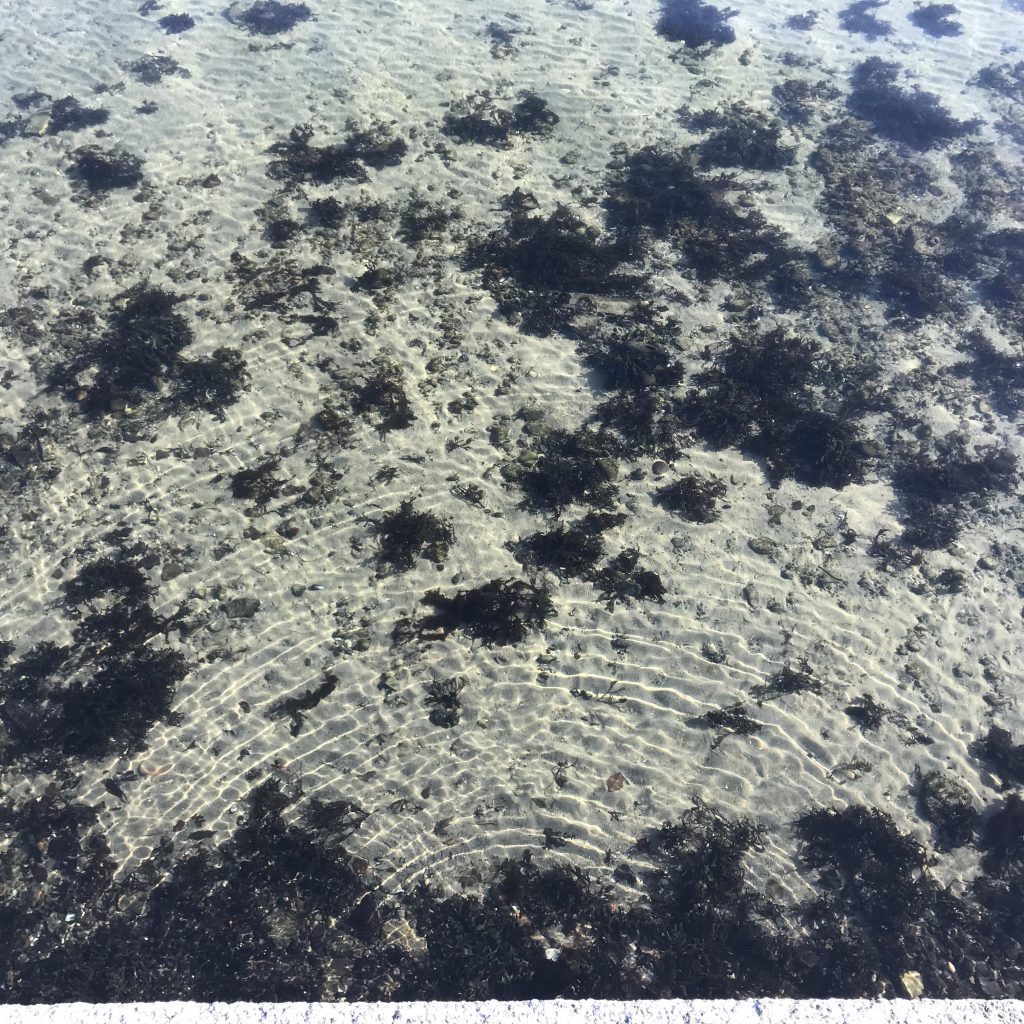
Moving on to a slightly more difficult case below.
You see the waves radiating away from the seagulls. Behind them, at a shallow angle, you mainly see the ambient light of the sky reflected on the waters surface to let you see the waves. Towards us, though, at a steeper angle, it gets more and more difficult to see the water surface and the waves, but we start seeing the light focussed on the sea floor, mirroring the circles of the waves above.
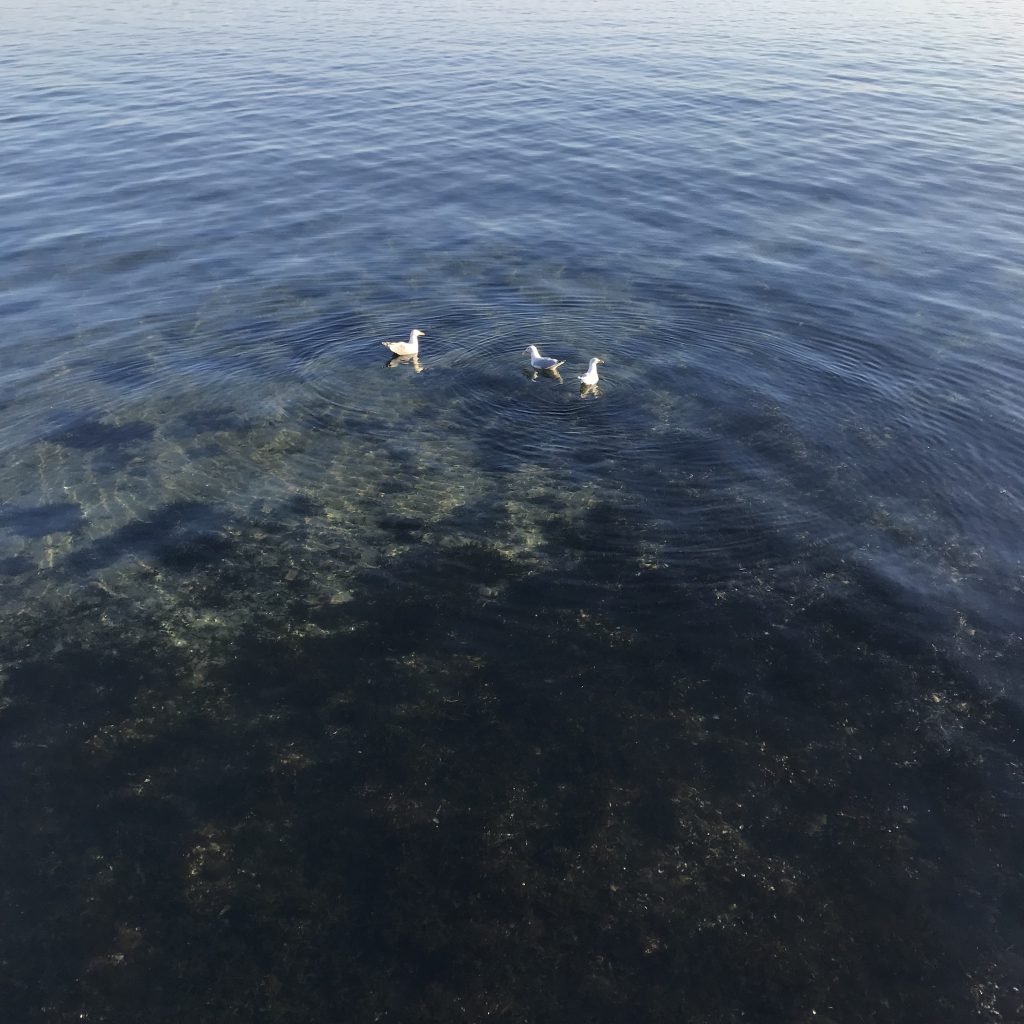
Here is another example of waves , except this time we see because of reflection of light on the surface further out, vs focussing of light on the sea floor closer to us, except that this time we are not looking at the same waves any more. The waves further out are wind waves and waves the birds made, the waves further in are similar to the ones in the second picture — created by an obstacle at the base of the sea wall.
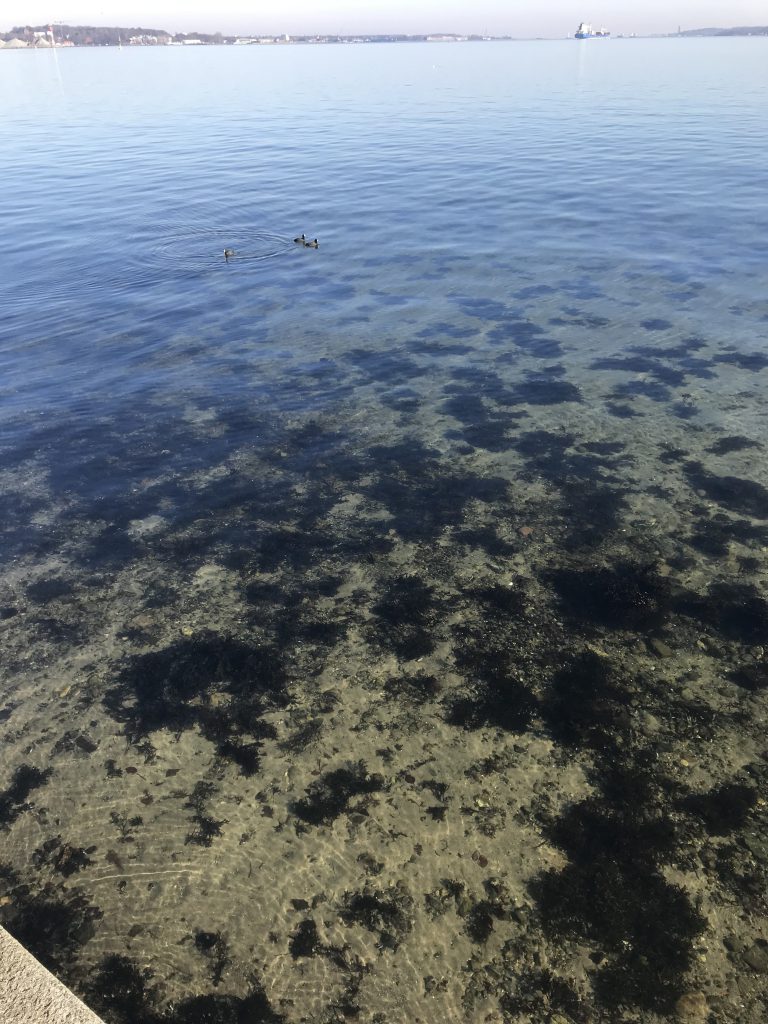
But then sometimes it gets really difficult to reconcile the waves we see through these two different phenomena. Below, the wave field we see by looking at the light reflected at the surface seems to be dominated by wave crests coming towards us, with the crests being more or less parallel to the sea wall at the bottom of the picture. There is some small stuff going on on top of that, but it doesn’t seem very important.
But now looking at the pattern of light on the sea floor, we pick out something very different: The dominant wave crests are now perpendicular to the sea wall when you look at the middle of the picture below (towards the bottom we see those half circles again that we saw above, too)! Where do those wave crests come from that are perpendicular to the sea wall?
There are actually two things I can think of.
First: they are actually an important part of the wave field, we just don’t pick them up very well because — in contrast to the waves coming towards us with the side going up towards the crest reflecting the dark land behind us and the side going down towards the trough reflecting the bright sky — waves going perpendicularly to that field would mainly reflect the sky, so it would be hard to make out their crests and troughs since they appear to be the same color.
Second: I’m not actually sure this makes sense any more. I was going to say that the surface shape of wave crests moving away from the sun might be more suited to focus light than wave crests moving in a perpendicular direction. But looking at all the examples of circular waves that I posted above and that show up as circles, not just in areas where the wave crest was in specific directions, this probably doesn’t make sense. If anyone is reading this, what do you think??
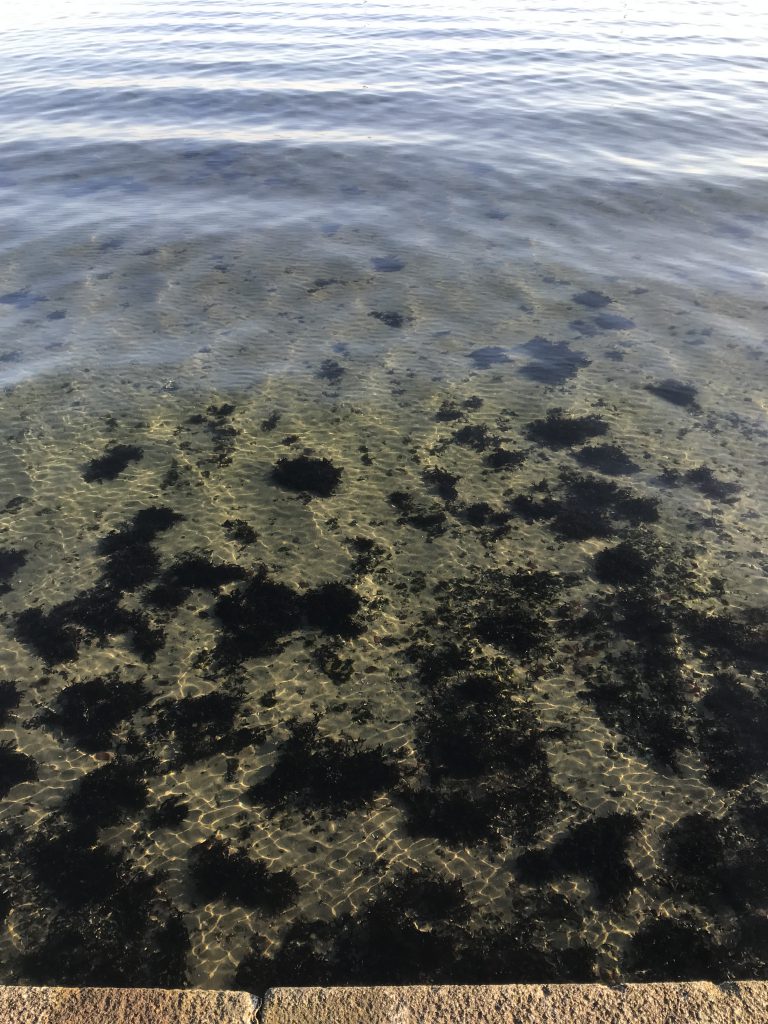
Below is another example: Here we see a crisscross of waves, a checkerboard pattern of an incoming wave field and its reflection — as long as we look far out onto Kiel fjord. If we look into the water at a steep angle, we see again wave crests that don’t seem to match what we saw on the surface! (btw, don’t let yourself be distracted by the ripples in the sand that might look like they are also caused by light being focussed by the water surface. They are just ripples in the sand…)
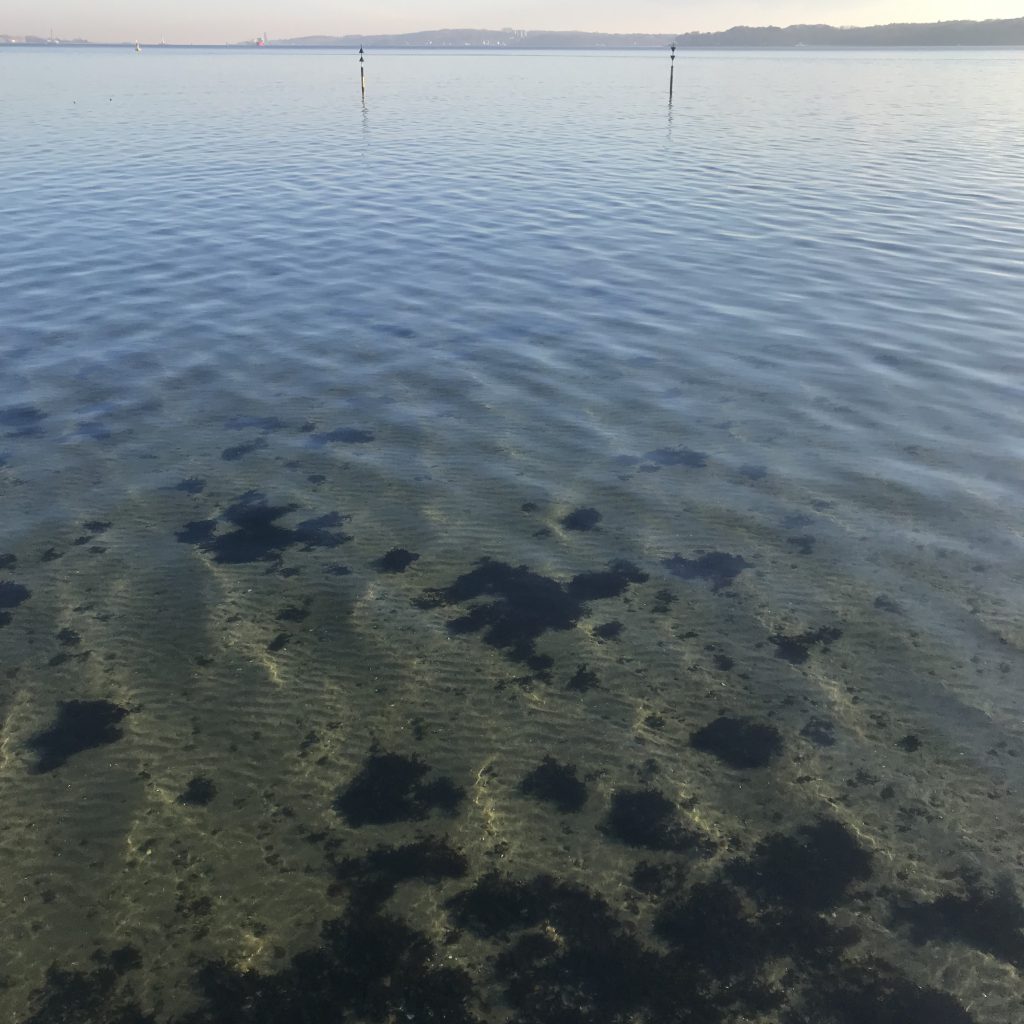
Clearly I need to think about this some more to figure out what’s going on here. I’m grateful for any input anyone might have!
